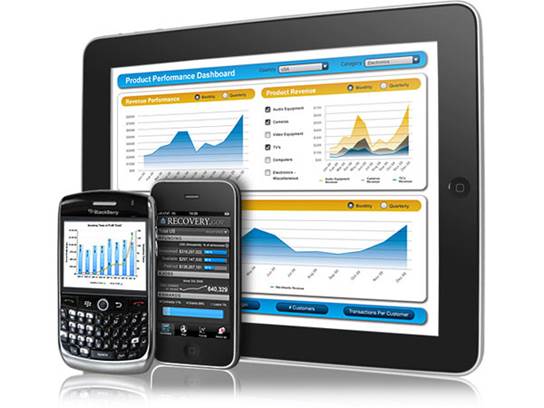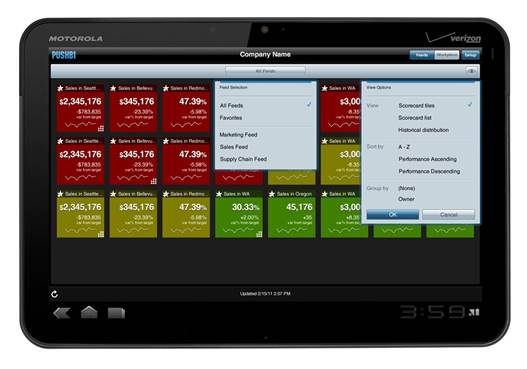Data on the go to push your company
forward
Business intelligence is nothing new to
many organizations, and desktop-based solutions have been around for quite some
time. One thing is new, though: Vendors that have built out their desktop BI
offerings have also been working on mobile-based solutions. These mobile BI
solutions take advantage of features specific to smartphones and tablets to
provide information where and when it’s needed.

These
mobile BI solutions take advantage of features specific to smartphones and
tablets to provide information where and when it’s needed
According to Joao Tapadinhas, research
director at Gartner (www.gartner.com),
“almost every [BI] vendor has a mobile BI solution,” which means that companies
today have plenty of options. Some solutions are more generic and others zero
in on specific uses, but all of them provide beneficial information for
companies in almost any industry. We’ll explain how you can use mobile BI to
improve your business processes and ensure your company’s success for years to
come.
Mobile BI use cases
Companies that will get the most out of
mobile business intelligence are those that understand the many different
applications for the technology as well as the best iteration for their needs.
It’s not what kind of information they can use, it’s what they will do with the
mobile BI solution and what the use case is,” says Tapadinhas. He also points
out that while vendors and companies are coming up with their own new use cases
every day, companies should be aware of the most popular implementations.

Management
dashboards provide a wealth of information for a variety of different topics
One particular use case – one that
Tapadinhas says is “driving the market” consists using mobile BI as a
management dashboard. Management dashboards provide a wealth of information for
a variety of different topics, such as data center performance or even
warehouse workflows. By using mobile BI to leverage these types of tools, you
can give users “an interactive and engaging visual experience that we expect
from a mobile device, but now with business information,” says Tapadinhas.
A similar use case allows companies to
optimize the business processes of workers in the field. For example,
Tapadinhas recounts a trip he took to Chile where a taxi driver “had a tablet
in the car that he used to understand how much revenue he might get if he
achieved a target.” The driver was using business intelligence to determine
when his shift should end and how many more fares he would need to reach his
revenue goal.
Another example of a mobile BI use case is
with content mobilization. This is much less complex than creating a management
dashboard or other tool for mobile use, and instead is designed to merely make
sure that the BI content you already have is mobilized and accessible on
tablets, smartphones, and other mobile devices. However, Tapadinhas cautions
that this type of implementation “might frustrate user experiences, because
it’s not really optimized for a mobile device.”
The last use case Tapadinhas pointed out is
for companies that want to use mobile BI for analytics or as a part of other
mobile applications. For instance, you can embed business intelligence into
your existing applications or take advantage of BI tools built into CRM and other
commonly used programs. These tools will provide the same types of information
you might expect from any other BI solution, but help gear it more toward that
specific application.
Information access & location-based
BI
The great thing about mobile business
intelligence is that “there really isn’t a type of information you can’t get on
a mobile BI platform that you can get with a traditional desktop solution,”
says John Myers, senior analyst at Enterprise Management Associates (www.enterprisemanagement.com).
You can still grab crucial customer information, data about industry trends,
and other data that can be used to push your company forward and provide new
business opportunities. And, depending on your device’s network connection, you
can access this information almost as quickly on a mobile device. Plus, mobile
BI can also provide other types of information in ways that can’t necessarily
be done on desktop platforms.

You
can still grab crucial customer information, data about industry trends, and
other data
“What you get is added geo-location data
for the device being used,” says Myers. “You can put that information into
context of the analytics. If a customer is using their smartphone and you know
the location, you can make specific location-based service options. If a sales
rep or customer service member is using a core device, you know not only
location, but [also the] identity of the sales rep’s pat-terns. Both of these
can be added into the equation where a static desktop solution tells you more
about what city or ZIP code the analysis is being performed in.”